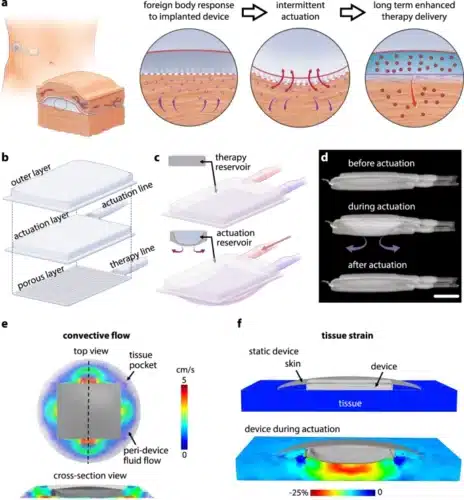MIT engineers and collaborators have incorporated a mechanical actuated soft robotic device in medical implants to overcome the scare tissue generation that restricts the working of medical implants.

MIT researchers have come up with a solution to circumvent the unwanted scar tissue generation. In a study using mice, they demonstrated that when mechanical actuation was added to a soft robotic device, the device maintained functionality for a lot longer than a standard implanted drug delivery system. The researchers discovered that the device is repeatedly inflated and deflated for five minutes every 12 hours. This mechanical deflection stops immune cells from gathering around the device.
“We’re using this type of motion to extend the lifetime and the efficacy of these implanted reservoirs that can deliver drugs like insulin, and we think this platform can be extended beyond this application,” says Ellen Roche, the Latham Family Career Development Associate Professor of Mechanical Engineering and a member of MIT’s Institute for Medical Engineering and Science.
The researchers now intend to test if they can utilize the device to deliver pancreatic islet cells that could function as a “bioartificial pancreas” to help cure diabetes, among other potential applications. Numerous methods, including the local introduction of immunosuppressants, have been tried by researchers to stop the formation of this kind of scar tissue. The MIT researchers adopted an alternative strategy that does not include the use of medications, instead, their implant features a soft robotic device that is mechanically activated and can be expanded and deflated. This type of oscillation can alter how neighboring immune cells react to an implanted device, according to research done in 2019 by Roche and her colleagues (with Dolan as the first author).
The authors also created a human-sized version of the device, 120 millimeters by 80 millimeters, and showed that it could be successfully implanted in the abdomen of a human cadaver.”This was a proof of concept to show that there is a minimally invasive surgical technique that could potentially be employed for a larger-scale, human-scale device,” Goswami says.
Click here for the published research paper.









